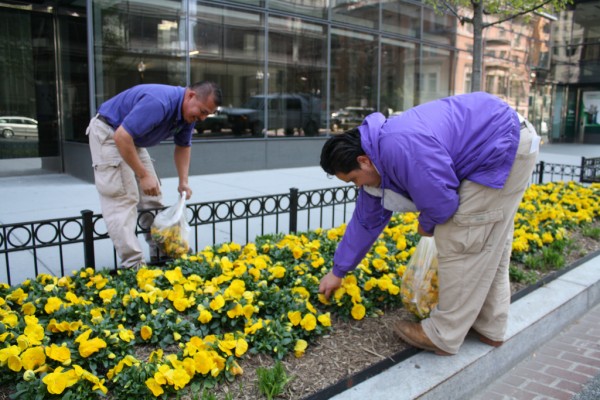Within the United States department of Labor, OSHA or Occupational Safety and Health Administration puts out quite a few safety precautions for landscapers to follow. Most of them are supposed to be carried out by the employer but even so at the risk of personal safety it is important to know what dangers a landscaping job can come with.
Whether you’re the company manager or an employee there are a few specific tips listed below that you should know above the rest.
Keep Your Best Tools Safe
As in any profession that requires a lot of rough work with your hands and feet the proper protection should be administered.
Foot injuries can range from a gardening tool piercing the sole of a shoe to another employee getting too close with the weed wacker. Your hands can also come across several close calls with equipment and chemicals. So as two of your most valuable body parts in this industry keep them safe with a good set of gloves and boots.
Go for ironclad heavy duty or industrial gloves as they will last longer and save you money in the long run. Boots that are recommended by this profession, even if they are a little pricer because of the name brand, are Reebok, who does a whole line of construction and landscaping footwear.
Lastly in this category, protective eye wear should be worn at all times when dealing with chemicals or power equipment. Not all protection can handle high amounts of perspiration, frost or UV ray exposure, so find what works best for you in extreme climates.
Know who can Save Your Life!
Employers are required to keep a first aid safety kit on the work site at all times. If you have not already been advised on where this is located you should make yourself aware as soon as possible.
Additionally if you are working on a site where a hospital or clinic is not readily available there will be a person on site that is trained in first aid for emergencies (usually a supervisor). Now we’re not saying to become this person’s best friend but, staying on their good side is certainly advised.
Make sure you also know how to handle any chemicals you come into contact with. A SDS (Safety data sheet) with a list of all the dangerous chemicals that are included at your site is provided by the employer. This includes what to do if your skin, eyes, mouth or nose is exposed directly to any gardening chemicals such as pesticides. Which means read up ahead of time, because in an emergency there’s no time to scramble for a manual.
Power Up and Lock Down
Landscaping can include a wide scope of responsibilities; this means a multitude of power tools that can be dangerous to the user.
The power tools you use should have a convenient single movement on/off which that is located in a place that minimizes accidental operation. A routine check every now and then to see how power garden tools are holding up on a manufacturer’s standard is wise due to the high rate of deterioration in professional well used equipment.
Safety guards and shields should be secure and before operation a check to see if the piece of equipment is clean and fully functioning should be administered especially with mowers or other high powered tools.
Electrify
Working out in the open can involve a lot of extension cords and connected equipment. Just like power tools these are important to inspect before every use. You never know when one of the blades of a tool could puncture, cut or fray an electrical cord.
Another important safety tip is always to check for water exposure before tampering with any electrical wires or equipment. One of the most common mistakes would be plugging in a cord with wet hands or leaving the extension cords out in a rain storm.
With a little common sense and a review of national safety standards administered by OSHA and Federal Registers, you will be on your way to a safer landscaping environment in no time.
Sources:
OSHA.gov
This article was written by Rebecca Borchers. Rebecca is an HR specialist and got an English degree from the University of Central Florida. She specializes in OSHA standards and often blogs for eCompliance.com on the latest in workplace safety. To learn more, visit her Google+.



